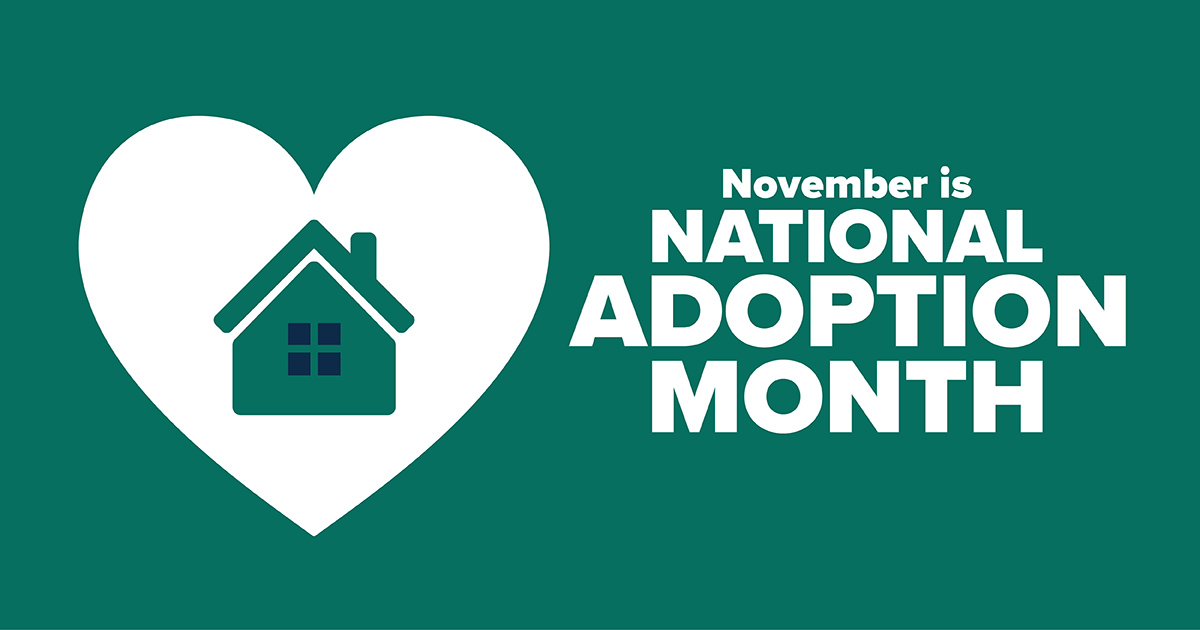In honor of National Adoption Month in November, we’re raising awareness of a widely known but little understood type of adoption. In a private domestic adoption of an infant, expectant parents (usually the mothers acting alone) decide to relinquish their newborn to an adoptive family of their choosing. Accurate information on private domestic infant adoptions (as they are known) is harder to come by than information on adoptions from the child welfare system, allowing anecdotal information from the media to play an outsized role in influencing public perception. In fact, we lack even basic information—including the number of private adoptions taking place each year—that would inform the policymakers responsible for putting safeguards in place for these adoptions. So, what do we know?
- Private domestic infant adoption is the least common type of adoption in the United States, less common than adoptions from foster care, adoptions by stepparents, and international adoptions. Although we don’t have an exact count, experts estimate that between 10,000 and 20,000 private domestic infant adoptions take place annually.
- The number of private domestic infant adoptions is shrinking. Since the 1970s, both the number and proportion of infants relinquished for adoption among all live births in the United States have declined. The decline can be attributed to (1) changing societal attitudes toward single motherhood, (2) the availability of effective contraception, and (3) the legalization of abortion, although access to abortion has not been considered a contributing factor to the decline since the 1980s.
- Although popular culture often portrays birth mothers as adolescents unprepared for parenthood, the reality is more complex. In fact, only one-fourth of the women who choose adoption placement are teenagers. The majority of birth mothers—a term for women who relinquish an infant for adoption—are high school graduates, in their 20s, and many of them already have other children.
- Expectant mothers generally choose adoption when they believe they’ve exhausted all other options. Although there are many factors involved in their decision, women who choose adoption often lack supportive relationships and are facing extreme economic or emotional stressors.
- A growing number of adoptions are arranged online with limited oversight. Birth parents can connect with adoptive parents directly through social media, or indirectly through loosely regulated online facilitators. Traditionally, brick-and-mortar adoption agencies facilitate adoptions by counseling expectant parents on their options, formally evaluating families who want to adopt children, and providing legal counsel. Some have expanded their services by offering them online. Less structured approaches, like personal connections or online facilitators, pose a greater risk that the birth parents will be financially or emotionally exploited, or that the child will be placed in an unfit home.
Unlike adoptions from foster care, which have some federal oversight, the regulation and oversight of private domestic infant adoptions are left to the states. Unfortunately, this leaves birth parents and their infants vulnerable to coercion or predatory practices. State policies vary significantly in a few key areas:
- Legal representation. Most states allow for dual representation, in which the same attorney represents both adoptive and birth parents. Both legal and adoption experts believe this creates a conflict of interest, which can negatively affect both parties.
- Consent and revocation periods. States vary on how soon birth parents can consent to adoption after their child is born, and the amount of time, if any, they have to legally change their mind about relinquishing a child. In Utah, for example, a birth mother can give her consent 24 hours after the birth, and the consent is irrevocable.
- Mandatory options counseling. Options counseling helps expectant parents make informed decisions, yet state laws vary in whether options counseling is required, who provides it, and what information is included.
- Incentives for birth parents. Inconsistent regulation of incentives—such as education expenses, housing, and prenatal care—can open the door to abuse or coercion. About 45 states regulate the expenses that an adoptive family can cover.
- Open adoptions. Open adoption arrangements are considered standard practice and allow birth parents to have contact with their child and the adoptive family. However, enforceability of these agreements varies from one state to another, and often there are no legal consequences if adoptive parents break adoption agreements.
The body of research on adoption, and the experts we consulted, suggest that a few best practices can improve outcomes, both for expectant parents who are considering adoption and for those who relinquish a child for adoption. These include: (1) comprehensive options counseling and post-adoption supports; (2) independent legal counsel; and (3) enforceable open adoption agreements that protect all families.
Our new brief sheds light on what the evidence tells us about private domestic infant adoption in the United States—including best practices for policymakers and practitioners—and identifies priorities for data collection and further research, such as developing a reliable annual count of private infant adoptions and examining the effects of increasingly common facilitation of adoption through social media and other online practices. Policy research in this area often focuses on the child and adoptive family’s outcomes, but through this brief, we chose to highlight how adoption policies and practices affect birth parents. Moving forward, more work will need to be done to build the evidence base for creating a more just and protective system for private domestic adoption of infants in the United States.





